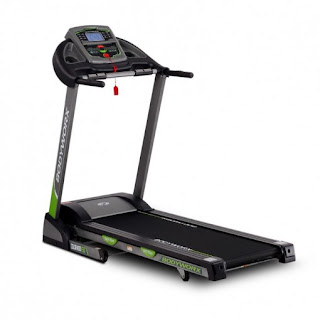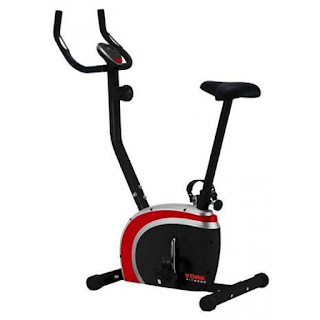Finding the Right Treadmill for You
If you’ve been thinking about how to get some exercise in a way that fits in to your busy schedule, you may have considered a treadmill. It fits neatly and unobtrusively in a corner, and allows you to exercise at any time of day that’s convenient for you, without the huge time commitment of having to go to a gym.
But what treadmill to get? There are many makes and models, from basic low-end models with nothing much more than a speed control, to high end Cadillac versions that automatically adjust speed and incline, monitor your heart rate, track your progress over time, and even ones that allow you to run trails from around the world. For those who simply can’t afford any downtime at all, there are models that include desk space so you can work while you walk. How do you pick the right one?
While there are many high-end options that you may or may not choose based upon your individual needs and preferences, there are a number of questions you need to answer for yourself before you can determine the necessary basics.
What are your needs and goals?
What type of workout will you be doing? Will you just be walking or will you be running long and hard enough to build up a real sweat? Will there be others using the machine, who perhaps have different goals and capabilities than you do? How much does the heaviest person who will be using the machine weigh? Not all models can handle someone who is very large. How much space do you have? Can you leave your treadmill out all the time, or will you need a model that can fold away and be stored behind the couch?
Horsepower
The first spec you’ll need to look at is the power of the motor. For light walking or jogging, provided that you are of average size and weight, a motor in the 1.75 to 2 horsepower range should do. If you’ll actually be running on your treadmill, you’ll need at least 2.5 horsepower, and if anyone who will be using this treadmill weighs over 100 kilos (225 lbs.) you should be looking at motors starting in the 3 horsepower range.
The Track
The length and width of the track will be determined by the size and height of the user. Tracks range from 40 cm (16 in.) to 56 cm (22 in.) wide. Narrower tracks are really only good for walking, or use by smaller individuals. People of average size will find a 40 cm wide track to be too narrow for running, with an increased likelihood of stepping fully or partly off the track. This is dangerous and could result in injury. Most users will be very comfortable running at any speed on a 56 cm (22 in.) track.
Track lengths range from 105 cm (42 in.) to 160 cm (63 in.). How long of a track you need will be determined by your stride, which can usually be predicted by your height. Obviously the taller you are the longer a track you’ll need.
Speed
Most models will go up to 19 km/h (12 mph) and this should be more than adequate for most of us, but if you’re a serious (and speedy) runner you’ll need something faster. To put it in perspective, Olympic sprinters are usually moving faster than 30 km/h (18.5 mph), so even if you’re not an Olympic sprinter you’ll need more than 19 km/h to do sprints.
Incline
Running up hills, while torturous, is great treadmill training. It not only makes your heart and lungs work harder, but requires extra effort from leg and core muscles, resulting in greater tone. Finally, because it’s harder, it burns more calories. Many higher end models can and do adjust the incline automatically as you run, based upon the type of training you selected, such as hill and interval training, or one of the Cadillac models that allow you to virtually run a wide variety of trails from around the world.
How much incline you’ll need will be based upon your goals and ability. Most models with incline capability will allow for grades up to 10 — 15% and this will be fine for most, but if you’re a serious endurance athlete you can get ‘incline trainers’ that go up to 40%!
In addition, there are some deluxe models that also have up to a 3% decline, to better simulate hill training, but this isn’t really necessary for anyone but the most competitive of distance runners.
Track Cushioning
Most models have at least some cushioning in the track, but if you are very heavy, you have joint problems, or you’ll be doing a lot of running, you may want to shop for a higher end model in this regard. Some models can reduce the impact on each step by up to 40%. This might also be necessary if the floor where your treadmill will be is not concrete and you have neighbors below you. It will help to reduce the noise.
Programs
Almost all models will have basic pre-set programs such as Manual, Hill, Interval, Cardio and Fat Burning. Higher end models will have variations on these, with more adjustable options.
Extra Features
You can get a host of extra options as well. We don’t recommend units with built in TV’s or MP3 players as if these electronic components break they can be expensive to fix. Better to have a wall-mounted TV or battery powered MP3 player that can be cheaply replaced if they fail. However, you can get other features, some of which are very cool. Some models have built in fans – literally cool!
A wireless heart rate monitor is a great feature for setting your pace and measuring progress and is very superior to one that’s built in to the handles — holding stationary handles doesn’t really work when running. As mentioned above you can even get models that allow you to load and run trails from around the world, while the trail displays on the screen in front of you, or you can follow your progress on an overhead map. A water bottle holder is almost a necessity.
As you can see there are many things to consider when choosing the right treadmill for you, but with this guide you should be well set to find the model that will take you where you want to go.





Comments
Post a Comment